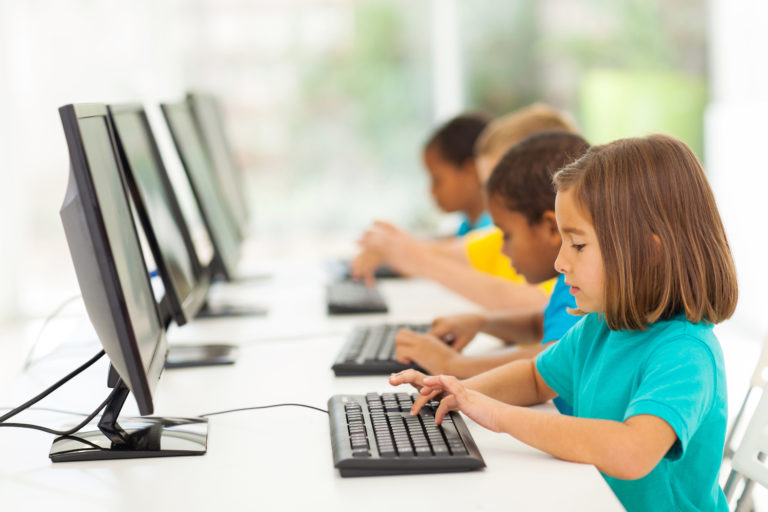With the 2024 presidential election a year away, voters next week will help shed light on how — or whether — education issues have the potential to inform presidential hopefuls’ agendas. On the ballot next Tuesday are two gubernatorial contests, thousands of school board elections, and 41 state ballot measures.
Governors Races
During this off-year election cycle, voters in two states – Kentucky and Mississippi – will elect a new governor.
In Kentucky, Democratic Governor Andy Beshear is in a tight race against current Republican Attorney General Daniel Cameron. Both Governor Beshear and Attorney General Cameron have prioritized education issues in their campaign, with teacher pay, school choice, and funding for learning recovery taking center stage.
In Mississippi, incumbent Republican Governor Tate Reeves is neck and neck with Democrat Brandon Presley, an elected member of the state’s Public Service Commission. A third-party candidate, Gwendolyn Gray, recently dropped out of the race and endorsed Presley’s gubernatorial bid. Since Gray’s name will remain on the ballot, there is a chance that neither of the two remaining candidates will earn 50 percent of the vote; potentially advancing them to a runoff election on November 28.
School Board Races
This year, there are school board elections in approximately 9,000 districts across 35 states. These local races reflect partisan politics at a national level, defining a battleground for the “parental rights movement” and focusing on issues such as critical race theory and transgender student rights. Adding complexity to the races and issues at hand is a significant increase in spending from PACs and large funders which are fueling historically low-dollar campaigns.
- Colorado: This year, three of the seven seats on the Denver Public School board are highly contested. While the election results won’t dramatically shift the overall ideological balance of the board, potential new board members differ on key issues related to school safety, school leadership roles, the growth of charter schools and how to address declining district enrollment.
- Minnesota: There are nearly 200 candidates vying to fill over 100 open school board seats in districts across Minnesota this year. This new level of competition has translated to increased campaign costs and the arrival of various special interest PACs in the state.
- Ohio: The nonprofit Moms for Liberty has homed in on central Ohio this election cycle. The organization has endorsed eight candidates across six public school districts whose campaigns are focused on culture-war issues such as book bans, transgender rights, and diversity in curriculum.
- Virginia: Fairfax County, a suburban community outside of Washington, D.C that is home to Virginia’s largest school district, will vote on a new slate of school board members. The current, largely Democratic, school board has rejected many of Governor Youngkin’s policies over the last two years, but conservatives are running with the hope of ending the stagnation.
Education Ballot Initiatives
- Colorado: Colorado voters will consider Proposition II which would allow for additional revenue generated from Proposition EE passed in 2020 to go towards continued Universal Preschool efforts. If rejected, the already-collected revenue will be returned and the Colorado Department of Revenue will lower nicotine tax rates by almost 12 percent.
- New York: If passed, small city school districts would be able to match their large district counterparts, spending up to ten percent of the value of their taxable property on school-related projects and maintenance. Currently, 57 small city school districts across New York can only spend five percent of these funds on eligible projects. Constituents will vote on Proposal 1 and decide whether to repeal the constitutionally-mandated debt limitations.
- Texas: Near the top of the Texas ballot, voters will consider Proposition 2, which would provide property tax relief for child care providers across the state. Following the expiration of COVID-19 relief funds in late September, many child care providers are struggling to remain afloat; fueling a shortage that results in almost half of Texas families living in a “child care desert.”
- Voters will also consider Proposition 8, which would approve the use of $1.5 billion to support the state’s broadband infrastructure fund expanding connectivity statewide. This effort would address the needs of an estimated 7 million Texans, including many K-12 and postsecondary education students, who are currently lacking access to broadband internet. Finally, through Proposition 9, Texans will decide whether to provide some retired Texas teachers with cost-of-living raises to their monthly pension checks.
What happens today in voting locations nationwide will inevitably shape education policies for years to come. Results will also give us a peek into the crystal ball, of sorts, for the 2024 election cycle. There is no more important duty as a voting citizen than to have your voice heard – even this year, in state elections, local school board races, or with statewide ballot measures.




